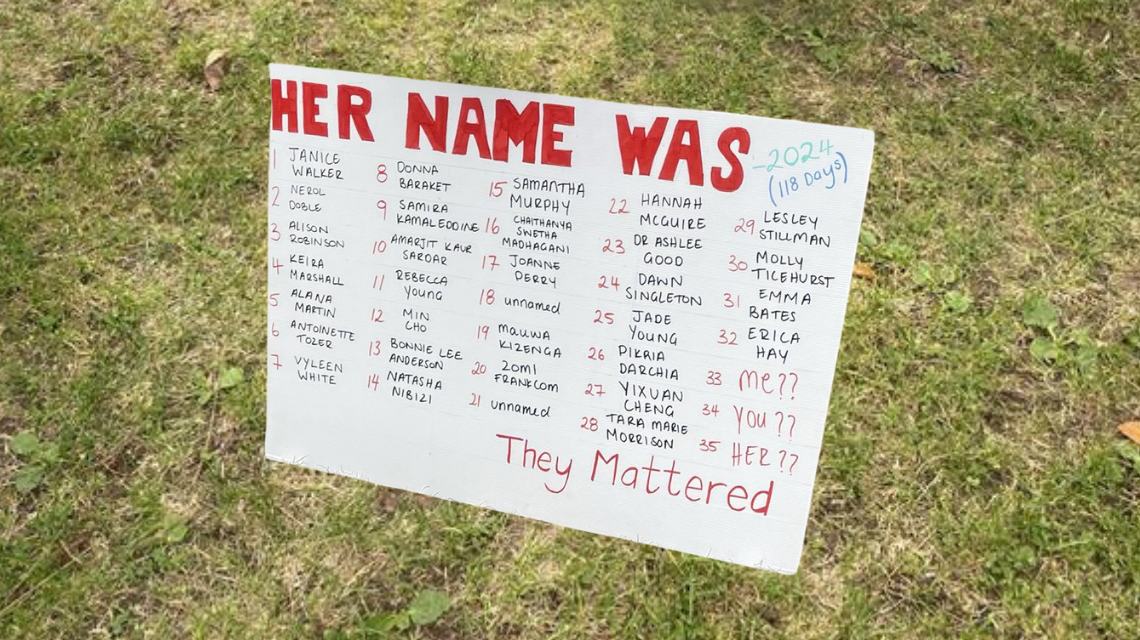
Over the past month, the deaths of far too many women have galvanised all of us – communities, governments, advocates – to do everything we can to stop men’s violence against women.
A national cabinet has been convened, experts including victim survivors are being brought together to talk solutions, and thousands of people have taken to the streets of their cities and towns to say: enough is enough.
Decades of advocacy from communities, organisations, victim survivors and those working on the frontline have brought the movement here.
How we solve and prevent violence against women and children isn’t a new conversation, but this moment feels different.
We are seeing more people wanting to understand why this violence is happening and how to stop it. We are seeing strong enduring calls for services to be supported to best respond when violence does happen.
And we are seeing more men than ever before choose to meaningfully engage in preventing violence against women. We’re moving beyond platitudes and protector roles, and towards a world where men grapple with their place in stopping this violence.
We welcome a direct response from the national cabinet this week, with solutions including more resourcing to support survivors in crisis, work to curb young people’s exposure to online pornography, and strengthening perpetrator accountability.
However, there is much more work to do and it has to keep going even when the media reporting subsides.
This violence is gendered, and that’s the uncomfortable truth we must hold if we are going to affect long-term change.
As tempting as it is, we must not look at solutions in isolation. In Victoria, the Royal Commission into Family Violence made explicit connections between access to housing, appropriate justice system responses and the role of health and finance systems alongside the need to drive cultural change.
The foundational work of the Royal Commission has laid the groundwork for what must come next – comprehensive action that takes every opportunity to prevent and disrupt the cycle of violence.
To drive down rates of violence urgently and into the future we need a diverse range of solutions to be actioned and we need to drive cultural and institutional change. We must make sure that when someone seeks crisis support or legal advice, they can access it. When a woman and her children need emergency housing it should be there and be secure. When a man needs to talk to someone about his behaviour, he should be able to have that professional guidance.
We need to hold industries and institutions that continue to uphold harmful gender norms and attitudes and turn a blind eye or even actively encourage violent or discriminatory behaviour to account. This will take appropriate legislation and trialling effective measures.
At the same time, we need to make sure that everyone is supported to learn about healthy relationships, consent and the warning signs of violence. That every single one of us is receiving the right messages, supports and information that we need to ultimately identify and prevent violence.
Above all when we go to solutions, we need to make sure they do not inadvertently cause harm to marginalised communities.
Stopping violence against women means we must address alarming rates of murdered and missing Aboriginal women, including addressing the ongoing impacts of colonisation. It means listening to the solutions from community and acting on them.
It means addressing gender-based violence faced by LGBTIQA+ communities, with a particular focus on challenging transphobia as trans communities continue to face horrific levels of discrimination.
It’s ensuring that we continue to challenge the idea that violence against disabled women is in any way inevitable or justified, and ensuring disabled women have agency, power and support.
This is a moment for action, for solutions, and for working together in coalition to stop violence against women and gender-based violence. And to make sure no one is left behind.

